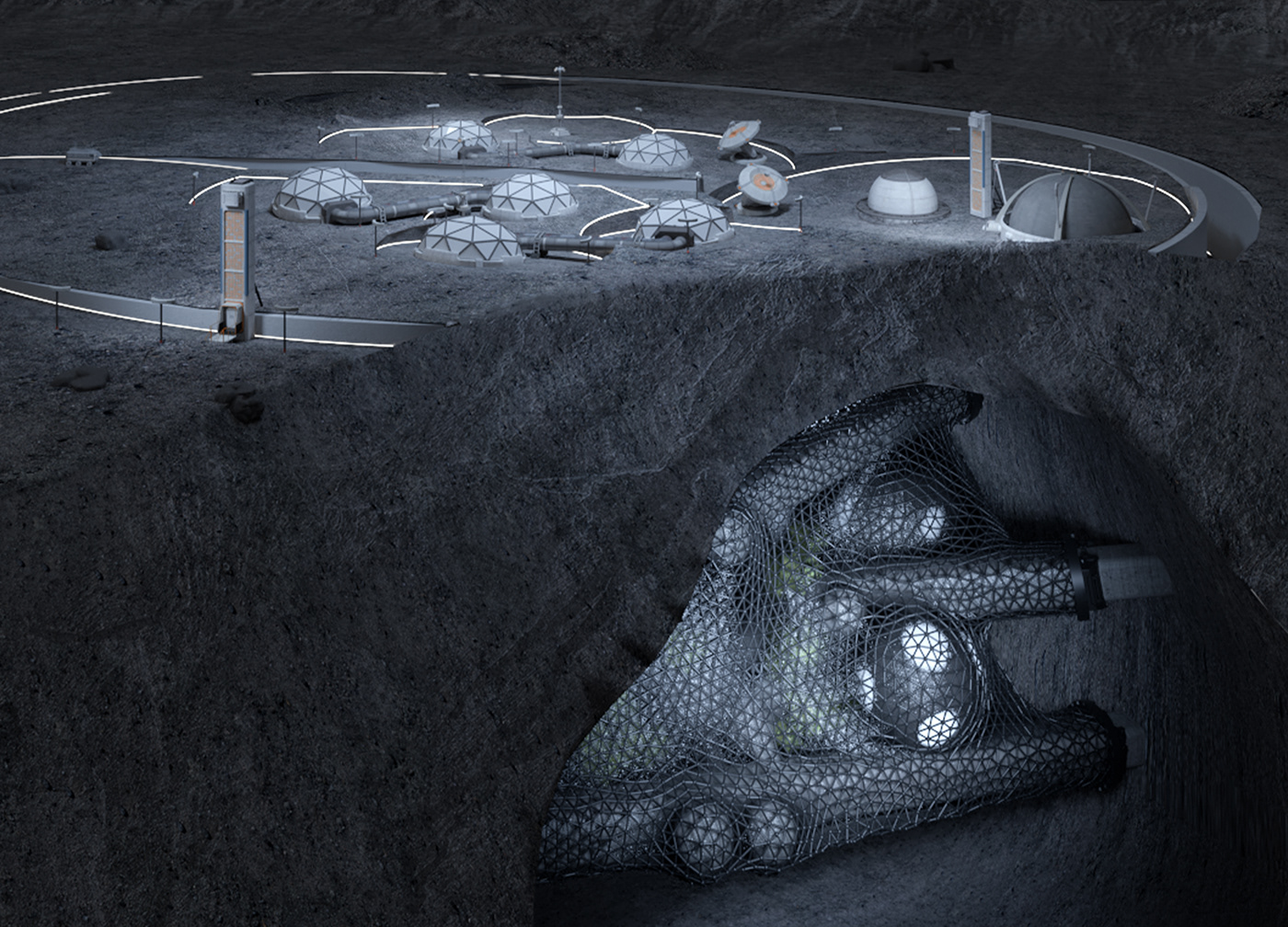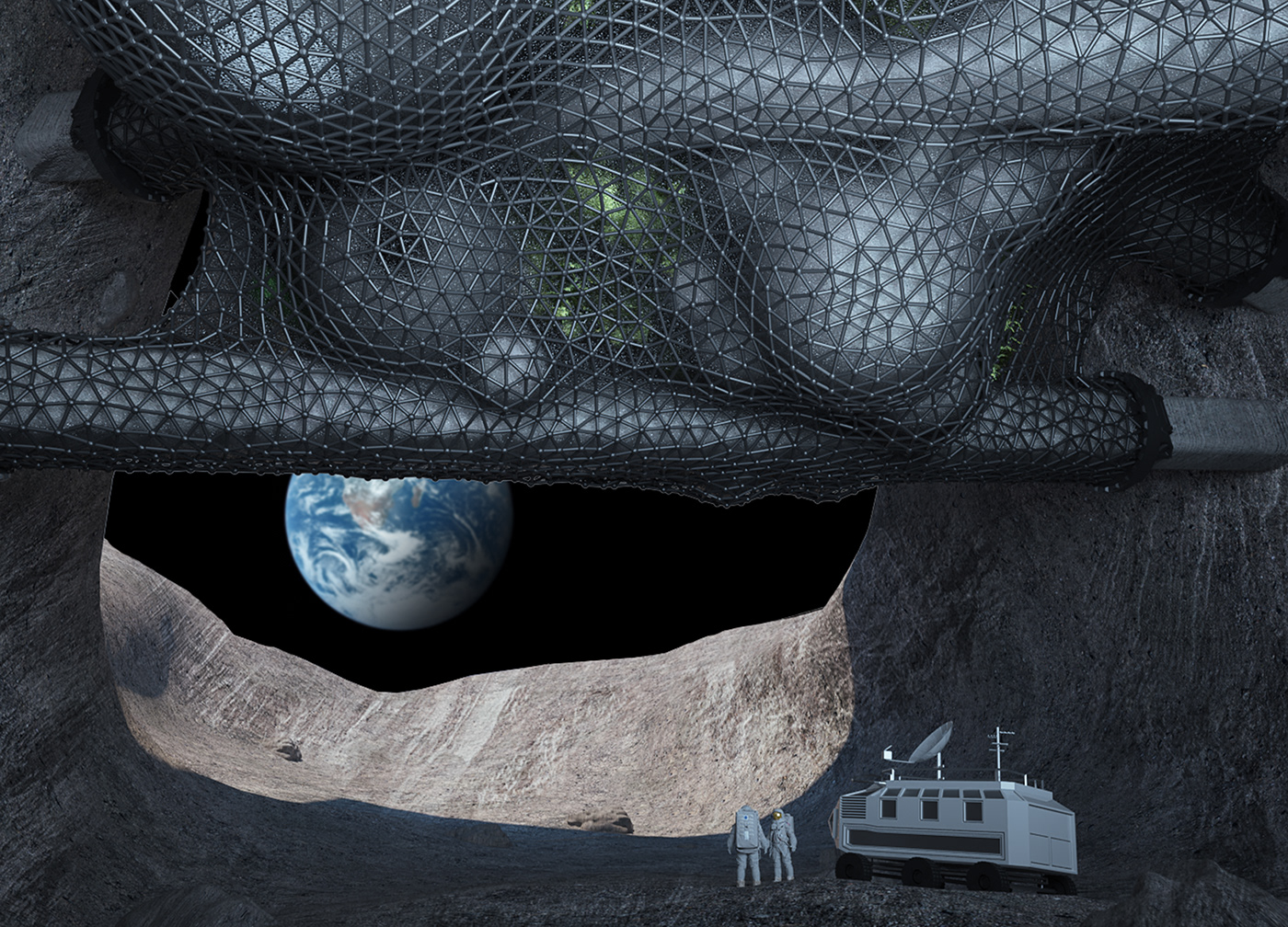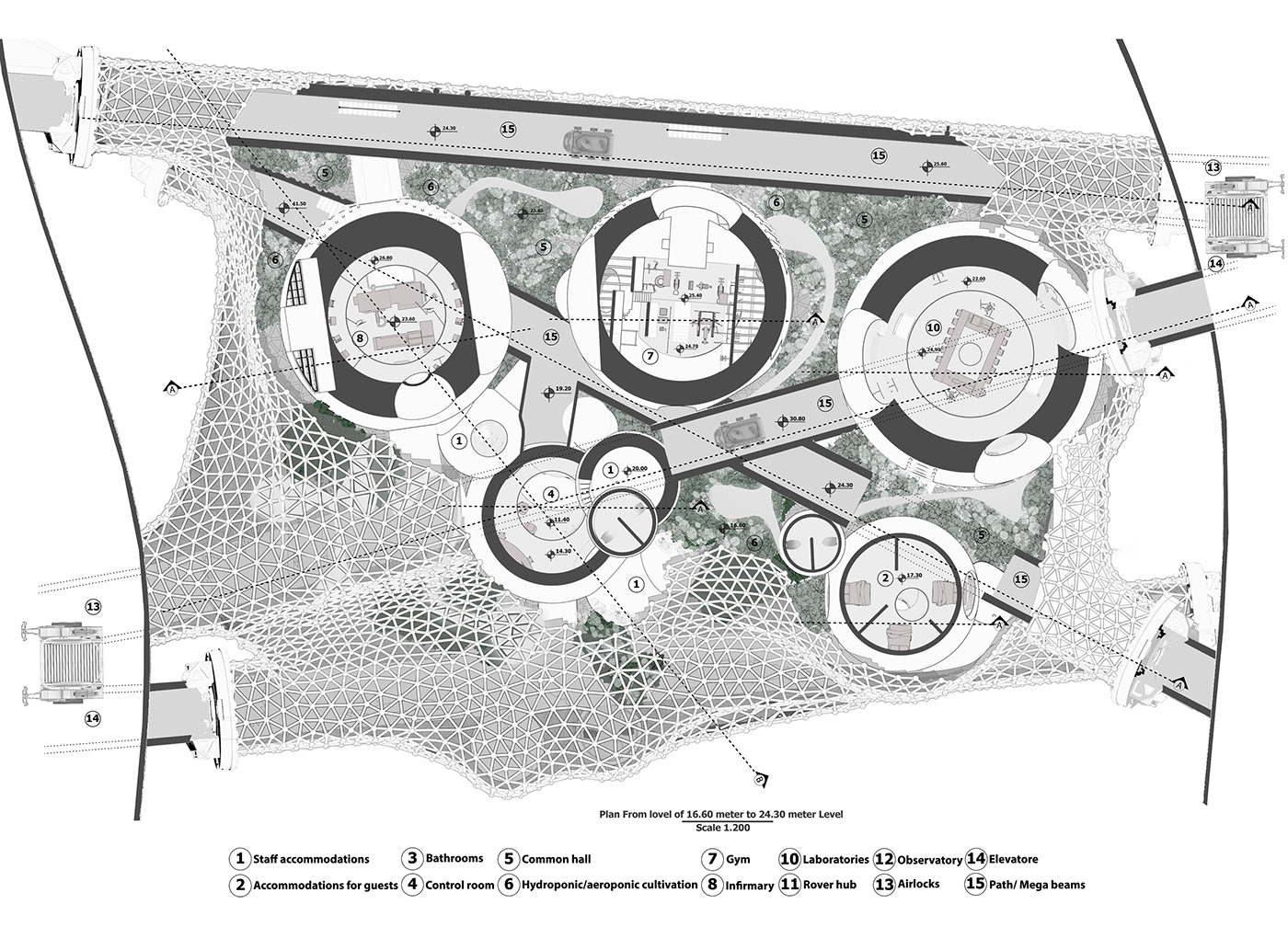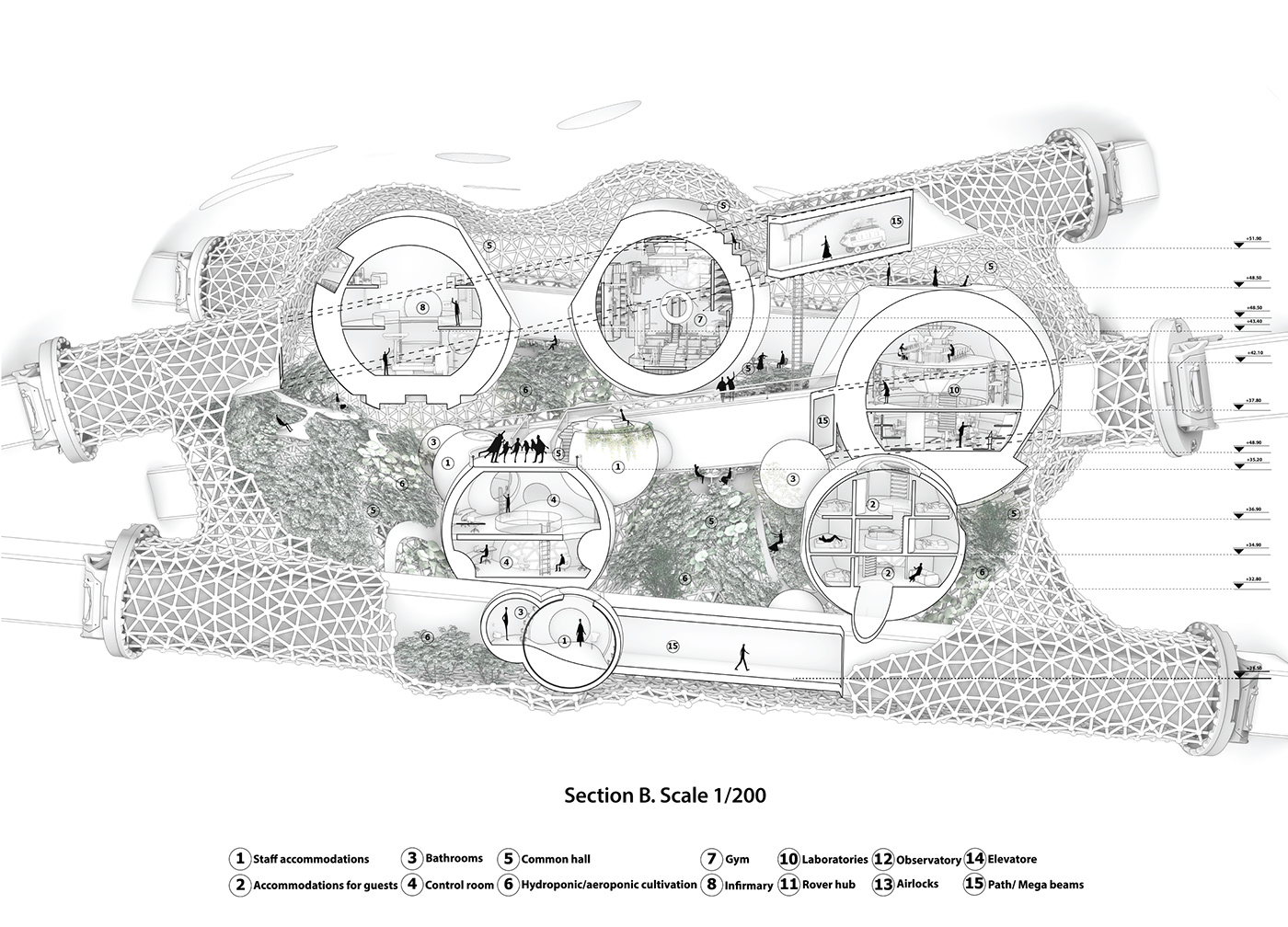
Architecture team:
Fateme Jalali
Raziyeh Zirrahi
Barbod Alimohammadi
Ali Jafari
Fateme Jalali
Raziyeh Zirrahi
Barbod Alimohammadi
Ali Jafari

Throughout history, architectural elements have consistently been defined in relation to their interaction with the Earth's surface. Now, contemplating these elements in different contexts can allow for the exploration of unique positional relationships with respect to historical precedents.



The project "Non-Directional City" is a space station designed for the lunar surface, envisioned within the Locus Mortis Cave. The station is suspended in the cavern's expanse by colossal beams and comprises spherical volumes nestled within two layers of protective skin. Positioning the project's primary volume in the intermediate space of the cave harnesses the lack of gravity to examine an innovative Figure-Ground dynamic.


Utilizing the reduced gravitational forces, the plan takes on a fluidity that extends beyond the project's floor, facilitating new possibilities for its interaction with the lunar terrain. While the plan consistently defines the project's floor, the moon's low gravity enables the plan to transcend all spatial boundaries, transforming it from a static configuration to a dynamic one. In other words, the plan, elevation, and section of the project deviate from their fixed, predetermined definitions. As the spheres rotate, the previously defined floor becomes an elevation and descends once again to form the new floor.



If Koolhaas in the “Prada Transformer” uses several cranes to rotate the architectural volume, causing changes in the plan, facade, and section within the project, "Non-Directional City" aims to emulate this phenomenon by rotating the spheres around various axes using mechanical arms, reproducing this state both internally and externally. Such rotational movements are visible in the project diagrams. The outer layers of the spheres themselves play a significant role in generating different programs during rotation, creating an intermediate space between the primary skin and the spheres.



The pervasive nature of the plan across all major surfaces of the project, along with the variable nature of the plans, incites a novel behavior among astronauts, urging them to move beyond conventional navigation on flat surfaces and encouraging them to inhabit unconventional orientations relative to architectural norms.




